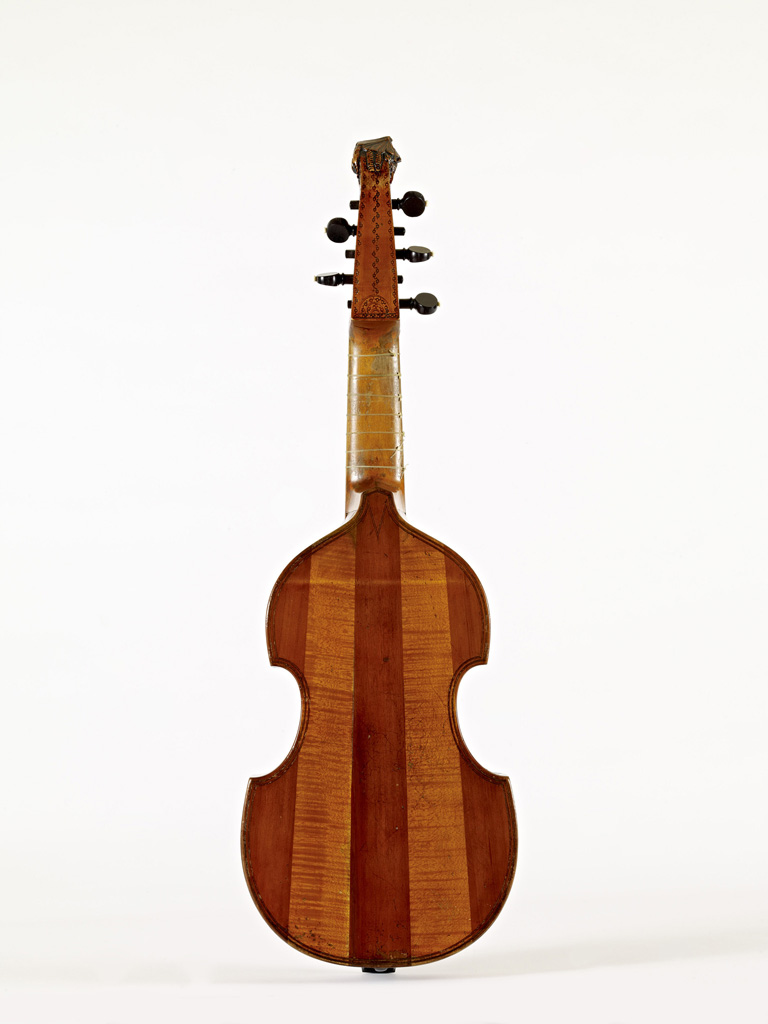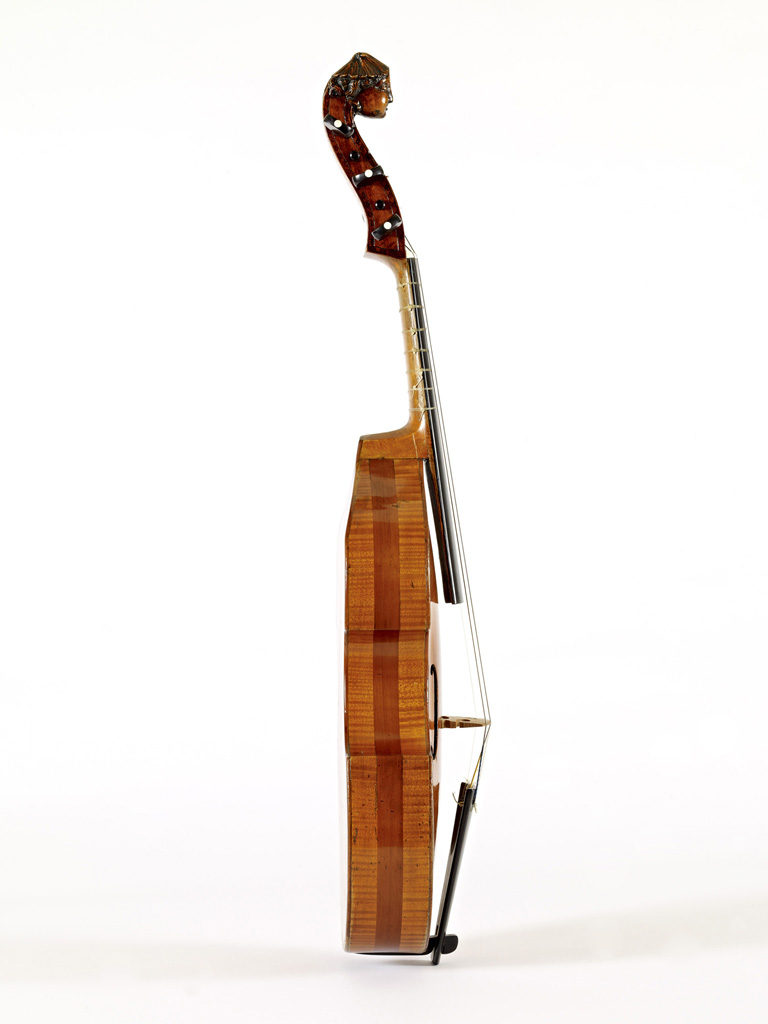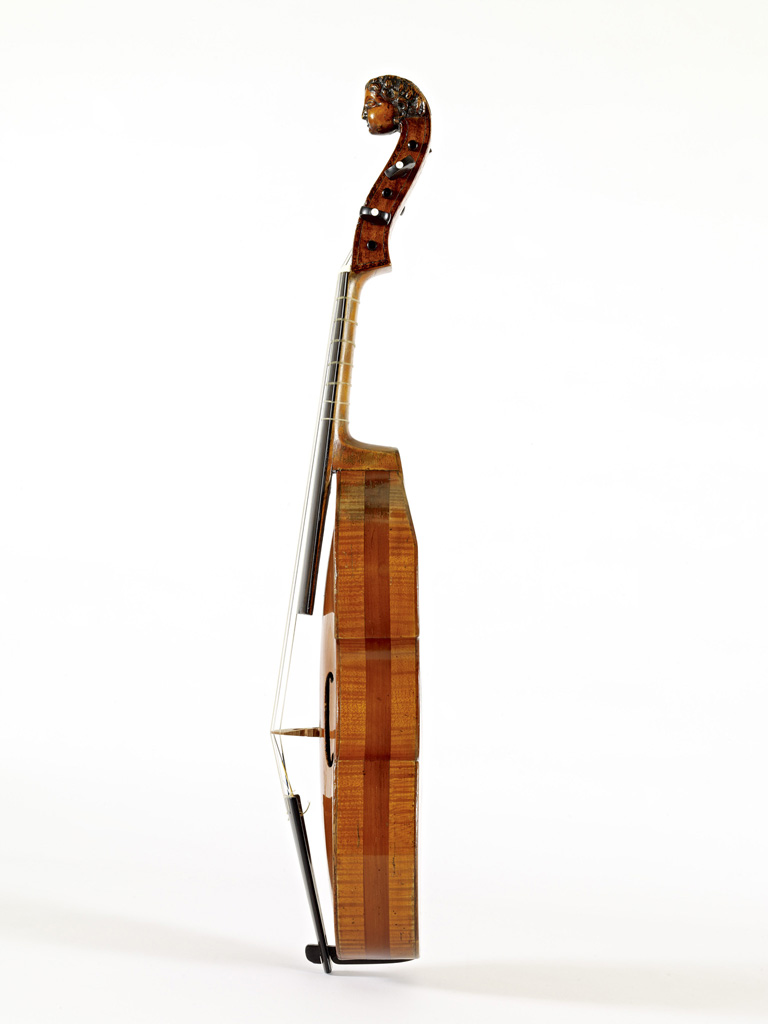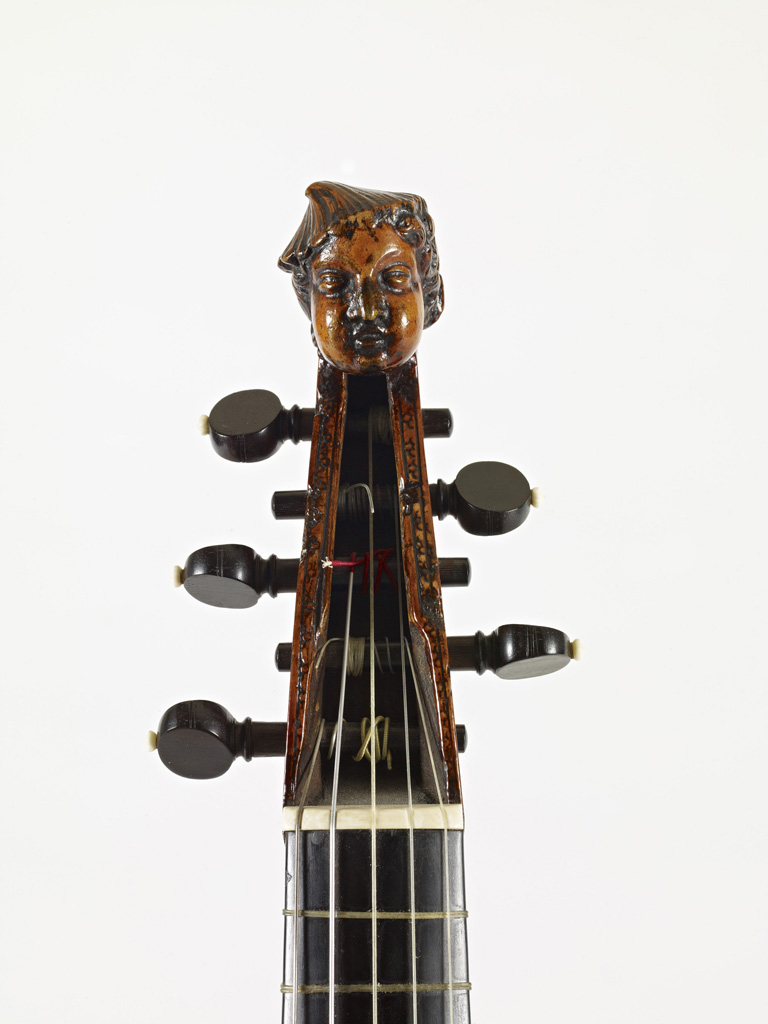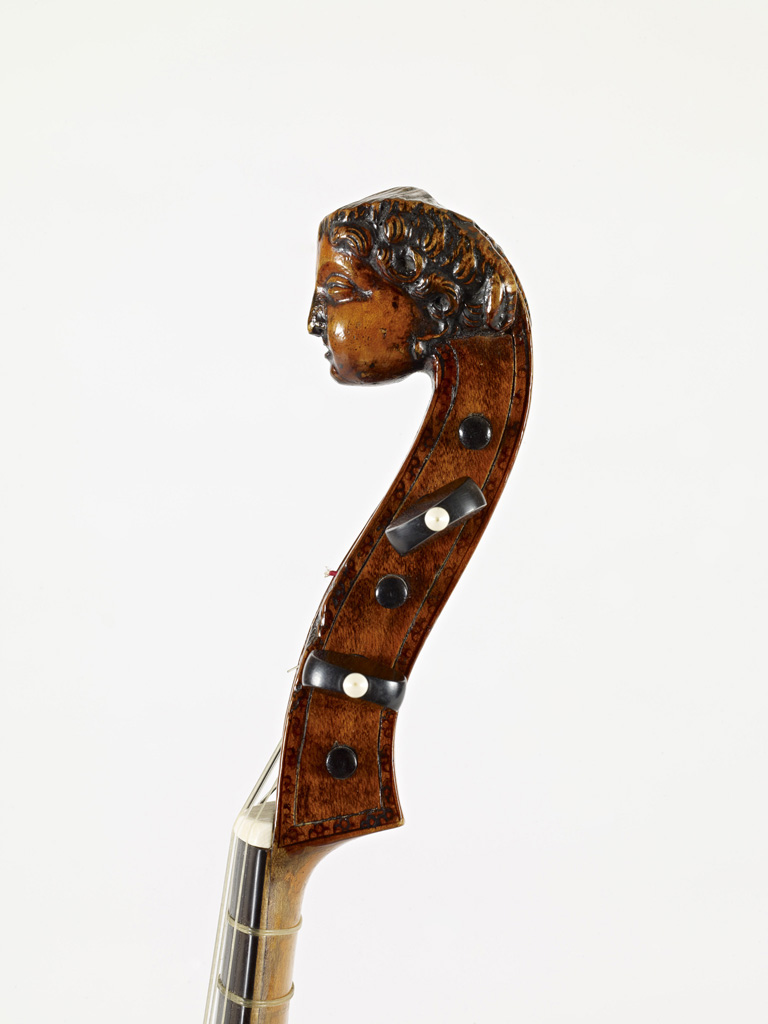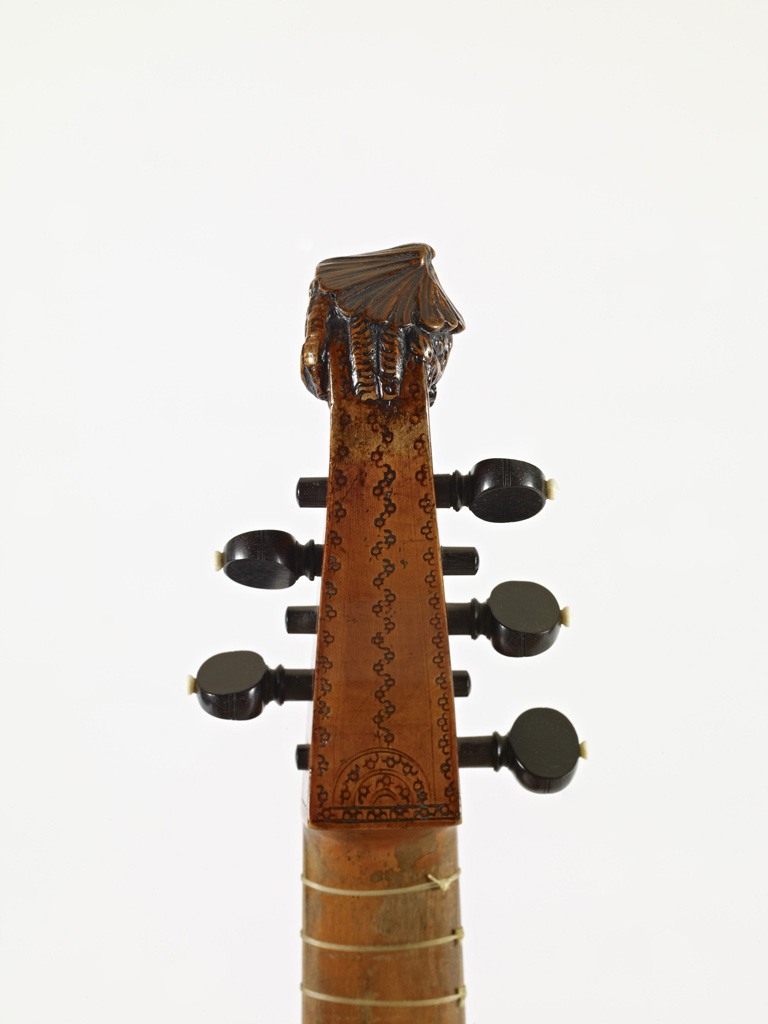Louis Guersan, one of the most important makers of stringed instruments in mid-18th-century France, was born in Paris about 1700; the luthier Jacques Boquay was his older half-brother, being the child of his mother’s first marriage. It is unknown from whom Guersan received his training (he was formerly thought to have been a pupil of Claude Pierray), but by the time of his marriage to Marie-Françoise Lécuyer in 1725 he was already an independent maker. During the following decades he built an extensive and prosperous business making instruments of both the violin and viol families, and selling related items such as bows, strings, accessories, and wood. In 1744 two of his wife’s nieces married luthiers, Benoist Fleury and François Lejeune, giving him still more family connections in the same business. Four years later he was elected maître juré comptable of the luthiers’ guild, subsequently also serving that organization as syndic (in 1750) and dean (in 1769). In 1758, four years after the death of his wife, he married Marie-Jeanne Zeltener, the widow of the violin maker Pierre-François Saint-Paul, whose son Antoine took over the shop following Guersan’s death in 1770.
In his own time Guersan enjoyed a high reputation, counting among his customers both noble amateurs and leading professionals such as the violinist and composer Jean-Marie Leclair; in 1754 he received a royal appointment as “luthier de Monseigneur le Dauphin,” that is to say violin-maker to Crown Prince Louis, the son of Louis XV and father of the future Louis XVI. An inventory of his shop taken at the time of his second marriage in 1758 lists more than 300 violins (fewer than half of them “de la façon du Sieur Guersan,” i.e., his own work) along with some three dozen cellos, but also a dozen pardessus, eight quintons, and no fewer than 64 bass viols, many of the latter by other makers both Parisian (Barbey, Bertrand, Boquay, Chéron, Collichon, and Pierray) and English. Most of the violins were valued at 30 livres, as were the pardessus and quintons, while cellos were worth variously 20, 30, or 60 livres, but bass viols were considered less valuable at either 10 or 20 livres, no doubt due to their declining popularity by this time. For the most part these values were unchanged in 1770, when Mme Guersan died only a few months before her husband, at which time the shop also contained several violas d’amore, a contrabass, and “deux violles en forme de violoncelle” (two viols shaped like cellos).
Guersan was an especially prolific maker of five-stringed pardessus de viole, of which more than 50 survive from his workshop, nearly all with backs and ribs made with alternating strips of dark and light wood. These date from 1741 to 1770 and account for nearly half of all extant instruments of this type. The Caldwell Collection’s example is thus one of many such instruments (including six others from the same year, 1754), while its undated companion quinton has only half a dozen known sisters. Parenthetically, it should be noted that 18th-century makers and musicians did not follow the modern convention of using the term “quinton” to distinguish a five-stringed instrument with sloping shoulders but many violin-like features—such as pointed body corners, F shaped soundholes, overhanging edges, and an arched back—from a viol-shaped instrument of similar size, tuned identically, to which the names five-stringed pardessus and quinton were applied interchangeably at the time.
The Musée de la musique in Paris has a notably large number of Guersan’s instruments in its collection, including two violins, two violas, four cellos, and no fewer than nine pardessus (one, exceptionally, with six strings); however, no bass viols by him are known to survive.


